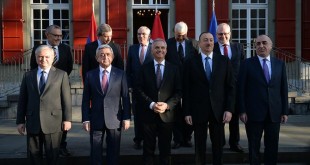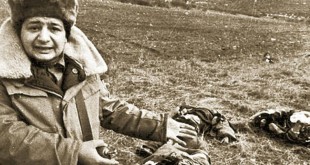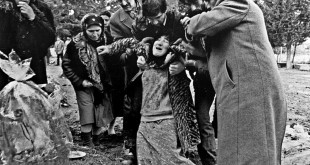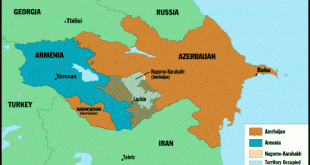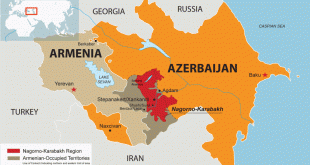Almost from the start of the Nagorno-Karabakh conflict, outside or third parties have sought to mediate the conflict, but the conflict remains unresolved. And that, in turn, has sparked a debate, sometimes intense and sometimes less so, as to whether such media contributes to conflict resolution or in fact keeps …
Read More »Tag Archives: NAgorno-Karabakh conflict
Chronicle of Khojaly Tragedy
Khojaly was under blockade since October, 1991. On October, 30 the ground traffic was cut off and helicopter was the only way of transportation. The last civilian helicopter arrived in Khojaly on January, 28 and after civilian helicopter was brought down over Shusha city, as a result of which 40 …
Read More »Khojaly Genocide
Over the night from February 25 to 26, 1992 Armenian armed forces implemented the capture of the Khojaly city with support of hard equipment and the personnel of the infantry guards regiment #366 of former Soviet Union. The massed firing with using artillery weapon, hard military equipment, which was began …
Read More »Damage caused to agriculture of Nagorny Karabakh
The occupied areas of Nagorny Karabakh represented a large agricultural region within Azerbaijan. Suitable intermountain and foothill plains, plateaus and the occupied parts of the Minor Caucasus create the favorable conditions for development of plant-growing and cattle-breading fields. Grain-growing, fodder production, vine-growing, tobacco-growing, potato-growing, cotton-growing, dairy farming and meat farming, …
Read More »Damages to industrial, housing and social objects as a result of Armenian agression
The decree concerning the development of productive forces in the mountainous regions, including Nagorny Karabakh autonomous area was passed before the beginning Nagorny Karabakh conflict. There were intensive construction works going on in Nagorny Karabakh and the occupied regions at time of the beginning of the conflict. Large-scale enterprises were …
Read More »Potential of natural resources in the occupied territories
Nagorny Karabakh and adjacent administrative regions of the Republic of Azerbaijan – Lachin, Kelbajar, Gubadli, Zangilan, Jebrayil, Agdam (regional center and a large part of the territory) and Fizuli (regional center and a large part of the territory) were occupied by Armenia from 1989 to 1993. At present, Armenians transgressed …
Read More »Occupied territories of Azerbaijan
Nagorny-Karabakh region Territory – 4 388 sq. km Population (1989) – 189 085 Armenians – 145 450 (76,9 %) Azerbaijanis – 40 688 (21,5 %) Russians – 1922 (1 %) Others – 1025 (0,6 %)
Read More »Beginning of Armenian-Azerbaijan, Nagorny Karabakh conflict
Following the events of February 1988, separatist groups of the Autonomous Nagorny Karabakh Province and Armenian militants launched hostilities for invasion of the Nagorny Karabakh. They were soon joined by the USSR troops stationed in Armenia and Nagorny Karabakh. Thus, the events similar to those after the Tsarist regime break-up …
Read More »History of the Nagorno-Karabakh Region of the Republic of Azerbaijan
The history of Karabakh is rooted in an antiquity, and it is one of the historic provinces of Azerbaijan, an important political, culturel, and spiritual center. Territorial claims of the Armenians against the Azerbaijani people and Azerbaijan are the main reasons for the so-called “Karabakh problem”. Karabakh was inalienable part …
Read More » Oval Useful news from Azerbaijan and Caucasus
Oval Useful news from Azerbaijan and Caucasus
